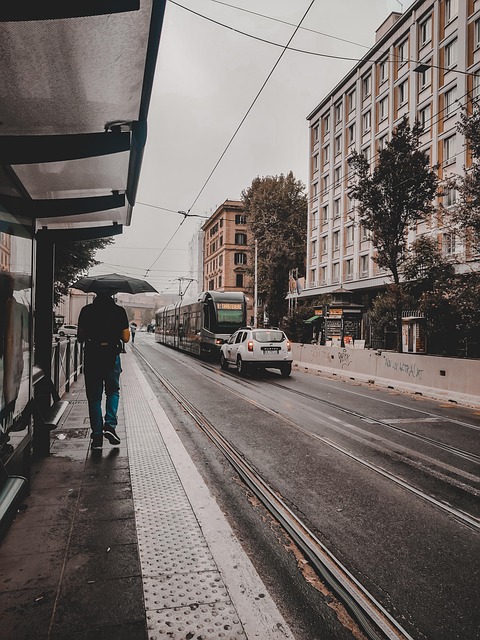Navigating city regulations can be a challenge, especially when you receive a notice from the Department of Transportation (DOT) about your sidewalk. In cities like New York, property owners are legally responsible for maintaining the sidewalks adjacent to their buildings. While this may come as a surprise to many, failure to comply with sidewalk maintenance regulations can result in formal violations, costly penalties, and long-term liability. Understanding why these notices are issued, what penalties they can trigger, and how to address them proactively is essential for any homeowner, landlord, or property manager.
What Is a DOT Sidewalk Violation?
A DOT sidewalk violation is a formal notice issued by the city’s Department of Transportation, informing a property owner that the sidewalk abutting their property is in violation of municipal safety or design standards. This does not constitute a fine or summons upon receipt but acts as a warning that corrective action is required. The notice includes a description and diagram of the problem areas and provides a timeline by which the issues must be resolved. Common defects include surface cracks, loose or uneven flags, trip hazards, and damage caused by invasive tree roots or utility maintenance.
The primary purpose of this notice is to promote public safety and accessibility. Sidewalks that are cracked, sunken, or otherwise damaged pose a real risk to pedestrians, including those with disabilities, the elderly, and children. These hazards not only put the public at risk but can also expose property owners to legal claims in the event of injuries.
Causes of Sidewalk Violations
There are several reasons why a property might receive a DOT sidewalk violation. The most common cause is structural deterioration over time due to environmental exposure. Harsh winters with freeze-thaw cycles can cause concrete to crack and crumble. Rainwater pooling from poor drainage can erode the sub-base and create uneven surfaces. Tree roots, particularly from city-owned trees, often lift or fracture slabs, compromising both appearance and safety.
In other cases, improper installation or substandard materials can lead to early failure. For example, concrete poured without the correct base preparation or reinforcement may crack prematurely. Pavers or slabs installed without sufficient slope or spacing can result in water accumulation and eventual degradation.
Finally, violations may arise from repairs or modifications performed without permits. The DOT has strict regulations on what qualifies as an acceptable sidewalk material and finish. If a previous repair does not comply with code—either in design, material, or workmanship—a violation may be issued during a routine inspection or in response to a public complaint.
Penalties and Consequences of Inaction
Though the initial sidewalk violation notice is not accompanied by a fine, ignoring it can have costly consequences. If the property owner fails to address the defects within the allotted timeframe, typically 75 days in New York City, the DOT may place the property on a city repair list. Once scheduled, city-hired contractors will perform the necessary repairs, and the property owner will be billed for the work.
This charge is often higher than what a private contractor would charge for similar services and is collected through a special assessment added to the property’s tax bill. These city-enforced repairs may also lack the aesthetic customization or attention to detail that a property owner might prefer if they had hired their own contractor. Additionally, once a violation is officially recorded, it becomes part of the city’s database, which can complicate property sales or refinancing processes unless it’s resolved.
More seriously, if someone is injured as a result of the sidewalk defect, the property owner could be sued for negligence. Under city law, liability for injuries caused by sidewalk hazards lies with the adjacent property owner, not the city. Lawsuits can result in financial settlements, legal fees, and increases in insurance premiums—all of which are avoidable with timely sidewalk maintenance.
Solutions and Best Practices for Compliance
The most effective way to resolve a DOT sidewalk violation is to act quickly and decisively. Begin by reviewing the notice carefully, noting the defects and the compliance window provided. Hiring a licensed and insured sidewalk contractor is the next crucial step. Contractors familiar with DOT regulations can ensure that the sidewalk repair Queens meets required standards and can help file the appropriate work permits.
Once the repair is completed, the property owner must request a re-inspection from the DOT. If the inspector confirms that the sidewalk is now in compliance, the violation will be dismissed from the system. Maintaining a copy of the contractor’s receipts, permit documents, and photographs of the repaired sidewalk provides a helpful paper trail for your records or future property transactions.
Preventing future violations requires adopting a proactive maintenance strategy. Property owners should periodically walk the perimeter of their property to check for signs of wear, uplift, or cracking. Ensuring proper drainage around sidewalks, trimming nearby vegetation, and addressing minor issues before they escalate are all part of responsible property stewardship. In areas with city-owned trees, coordinating with the Parks Department when planning repairs can help avoid penalties related to unauthorized root cutting or tree damage.
Conclusion
DOT sidewalk violations can initially feel intimidating, but they serve an essential public service by ensuring safe, accessible walkways for all. By understanding the causes, acknowledging the potential penalties, and responding effectively, property owners can address these notices with confidence and minimal disruption. Choosing timely action over avoidance not only protects you from fines and legal disputes but also contributes to a safer, better-managed urban environment. In the end, a well-maintained sidewalk is a shared benefit—for owners, pedestrians, and the city alike. Whether you’re a homeowner looking to resolve a DOT violation or a contractor seeking expert insight, Nycsidewalkviolations.com is your one-stop solution for sidewalk compliance in New York City.








Leave a Reply